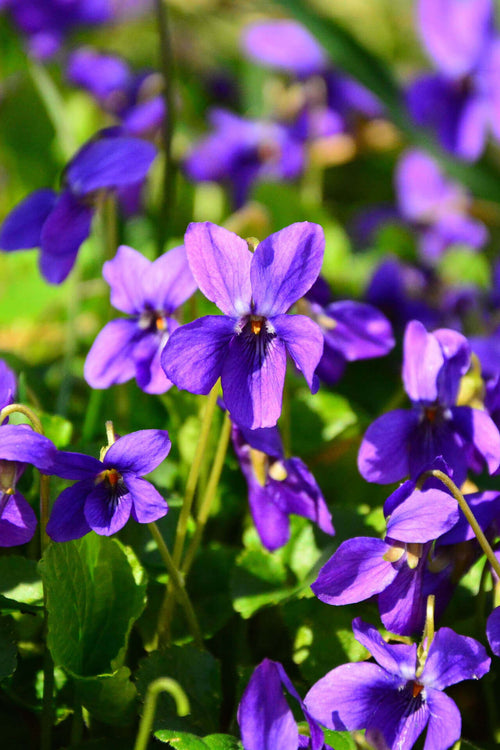Violet Plant
Violets are a genus of flowering plants in the family Violaceae. The genus includes only one species, Violetta 'Bergamo.' The common name violet comes from the color of the flowers of this plant. Violets and White Violets are herbaceous perennial plants native to temperate Asia and Europe. They are grown as ornamentals for their nectar-rich flowers attracting butterflies and bees.
Reasons you might want a violet plant:
It's beautiful
The flowers blend purple and blue with bright yellow stamens, creating a purple-blue-yellow color scheme. The flowers appear in full bloom during the summer and springtime from June through September; however, they can last as long as late October or even later. You'll love their cheerful colors and positive impact for years. They are a truly stunning addition to your garden.
Easy to grow
It's relatively easy to care for and can be grown in many environments. It is adaptable and durable, making it ideal for all gardening types. With the proper care, a Violet Plant can last you years as an attractive and unassuming centerpiece of your garden.
Bloom seasons
These violets live from spring to fall. It tends to bloom in the warmer months and can produce flowers as early as June, sometimes continuing through September. The blooms will last longer if you cut them when they're not fully opened, allowing the nectar time to set. These blooms are also beautiful when they are covered with snow!
Where it would look significant and positive reasons to buy:
It's an ideal houseplant, on your patio, in front of your house, or even in your garden and grows well almost anywhere that enjoys rainfall. It can be grown in a sunny spot outdoors, indoors in the house, and in other places.
Why purchase a Violet Plant?
They are easy to grow. Create beauty with flowers. These plants are great as indoor plants, and they are ideal as Houseplants. They will also brighten up any room or place in it. So it's great for your kitchen, living room, office, or home.
Growing them indoors:
It is an indoor plant that can be grown in a window box or as a houseplant. You must give them the correct amount of light and water to grow them indoors. They are easy to care for violets and they do not require much special attention. You can put them in a pot and give them some water every few weeks but don't overwater because if you do, it could kill the plant.


















































